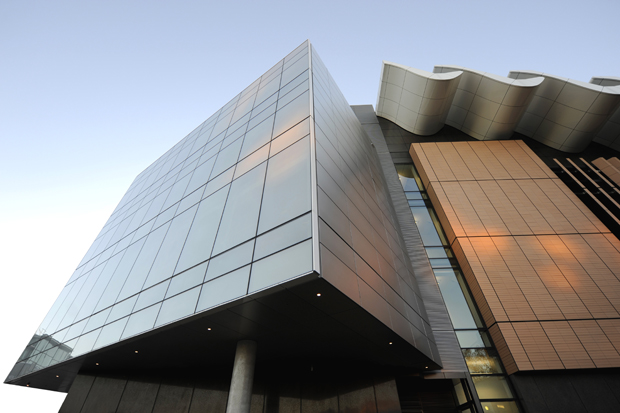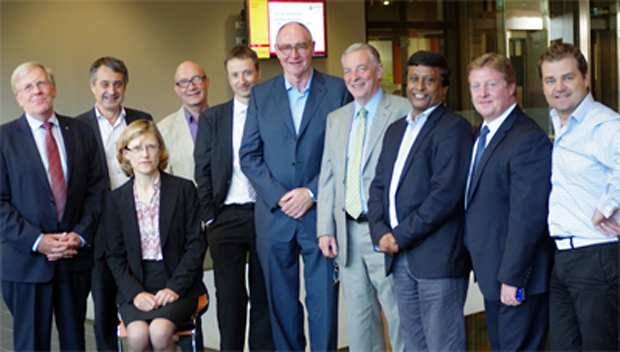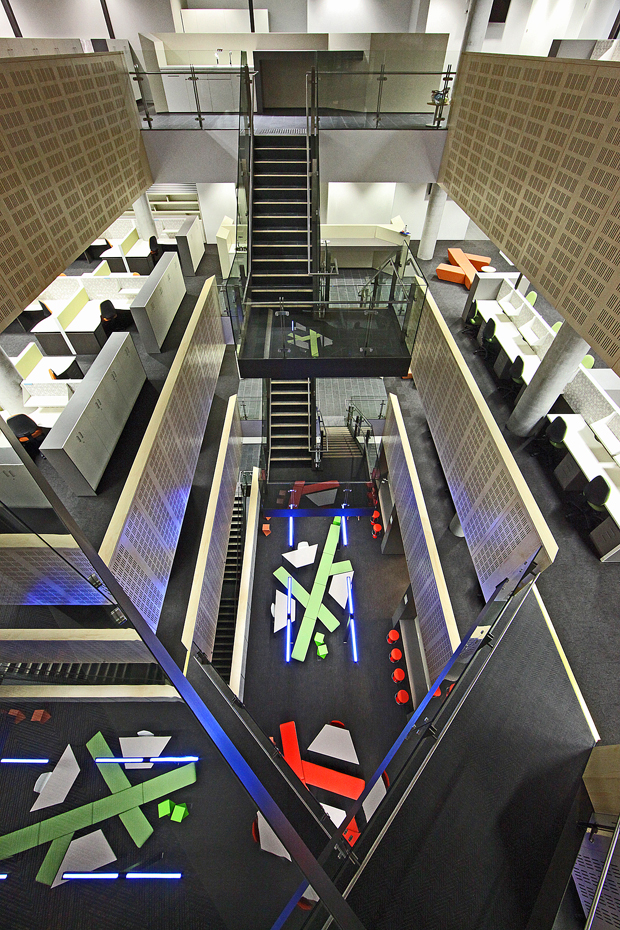The recent Australian Sustainable Built Environment Council's (ASBEC) initiative to have all Australian homes achieve Net Zero Emissions by 2030 has been enthusiastically received, but there are other worthy parallel endeavours to embrace. The Co-operative Research Centre (CRC) for Low Carbon Living is one of them.
Officially launched in December 2012, the LCL CRC aspires to provide research capable of lopping 10 mega tonnes of carbon emission annually from residential and commercial buildings by 2020. Such a reduction is touted as being similar to removing 2.3 million cars off our roads each year.
CRCs are federal government programs. Almost 200 CRCs have been rolled out following their initiation in 1991, with 38 active in the 2012-2013 period. Although funded by the government, CRCs are designed to attract significant research dollars from the commercial sector.
For example, while taxpayers have poured more than $3.5 billion into CRCs over the past 20 years, another $11.4 billion contribution has come from industry and other partners.
In the case of the CRC for Low Carbon Living, the Commonwealth has anted up $28 million over the seven year life of the Centre. This is leveraged against additional contributions from the Centre's initial partners, giving the CRC about $100 million in total.
A total of 45 entities have joined the party, including industry partners and associations; universities; federal, state and local governments.
Partners include: BlueScope Steel, Brookfield Multiplex Constructions, Chromasun Pty Ltd, Nova Deko Pty Ltd, Suntech R&D Australia Pty Ltd, CSIRO, Sydney Water Corporation, Curtin and Swinburne.

Although there are hefty funds going into this CRC, it has been calculated that it should, in turn, help the Australian economy realise around $684 million in savings.
Scientia Professor Deo Prasad, CEO of the CRC for LCL says, "Many people do not realise the biggest opportunity for emissions reductions is in buildings. The built environment is responsible for 40 per cent of energy use and Australia's homes account for 16.5 per cent of our emissions in electricity use alone, without accounting for energy embodied during the production and disposal of building materials."
Prasad believes "the reduced cost of achieving national greenhouse gas emissions targets will cut the cost of Australia's carbon reduction obligations by around $70 billion by 2040, all without a reduction of living standards".

CRC for LCL Board of Directors: (from left) Sandy Hollway (Deputy Chair), Prof George Collins, Dr Kate Wilson, Prof Ken Maher, Adj Prof Lester Partridge, Prof Dennis Else, Hon Robert Hill (Chair), Prof deo Prasad (CEO), Dr Kevin Cullen, Tim Horton.
The research effort has three main program thrusts: Integrated Building Systems, Low Carbon Precincts, and Engaged Communities.
In the first instance, the LCL CRC figures that a building's fabric represents around 15 per cent of its lifecycle greenhouse gas emissions. This presents a significant opportunity for carbon reduction, especially since the roof area in Australian cities technically receives enough sunlight to power all of Australia's built environment needs. The group will be tackling building-integrated multipurpose solar products and low carbon construction components and materials.
The second program acknowledges that buildings do not exist in isolation. Instead, they're interconnected through multiple levels of infrastructure, such as energy, water, waste and transport, each of which has its own unique carbon footprint.
With the Australian population anticipated to experience 60 per cent growth within the next 40 years, the CRC believes coping with this expansion whilst simultaneously reducing the carbon load of our urban precincts is possible.
The third research program, Engaged Communities, is ultimately where rubber meets the road. After all, world-leading product technology and urban planning will only take us so far down the road unless appropriate behaviour and action is engendered within the general population.
The journal 'Sustainability' published a paper on this dilemma in March. Co-authored by Research Professor in Sustainable Urbanism at Swinburne University of Technology and LCL CRC Research Leader Peter Newton the paper titled 'Exploring the Attitudes-Action Gap in Household Resource Consumption: Does "Environmental Lifestyle" Segmentation Align with Consumer Behaviour?' drew from a survey of 1250 residents in Melbourne, which identified three groups with different environmental attitudes.
On one end was the 'committed greens,' and on the other, the 'enviro-sceptics.' Both held strong attitudes on eco issues, although "few differences were found in relation to each segment's actual consumption of energy, water, housing space, urban travel and domestic appliances."
In short, actions speak louder than words and many keen green-leaning citizens lacked the time, information or habit breaking to effect real change.
From this, the CRC's Engaged Communities team are seeking to "understand the deeper psychological barriers to low carbon living in Australian culture."
The LCL CRC will develop what it has termed 'Living Laboratories'. These learn-by-doing community developments will test new products, buildings, infrastructure and lifestyle alternatives, with the the opportunity to significantly lower the carbon footprint.

The 6 Green Star Tyree Energy Technologies Building (TETB) at UNSW is home to the CRC LCL. Photography by John Gollings.
There are already 23 core research projects and time will tell whether the CRC will deliver on its promises, but certainly it is comprised of high calibre people and organisations.
Analysis of CRCs programs from 1991 to 2017 has identified the technologies, products and processes they produced (and are expected to produce) could be valued at $14.5 billion.
Just as there are other related CRCs, such as Water Sensitive Cities and Sustainable Forest Landscapes, there are also low carbon living initiatives that aren't CRCs.
The federal government announced a partnership with Westpac's Davidson Institute for the delivery of 30 free carbon education seminars under the moniker of "Operating your business in a low carbon economy".
In 2010 it established Low Carbon Australia Limited (LCAL) to help "the move towards a low carbon economy". LCAL manages $84.6 million in investment funds providing finance to improve energy efficiency and achieve carbon abatement in the property and industry sectors.
With ASBEC's Net Zero Emissions enterprise and other similar programs, one might think the sustainability sector is awash with funds for low carbon strategies. However, this is not so according to the Australian Conservation Foundation, which published figures suggesting that when $1 billion of government money was spent on climate change initiatives, another $11 billion was given over in subsidies to greenhouse gas emitting, fossil fuel industries.
If, as many believe, that nothing short of a full-on emergency response will be sufficient to bring about positive results in climate change, the CRC for Low Carbon Living is but a brave bench landing, albeit a vital one, needing industry support and encouragement.

